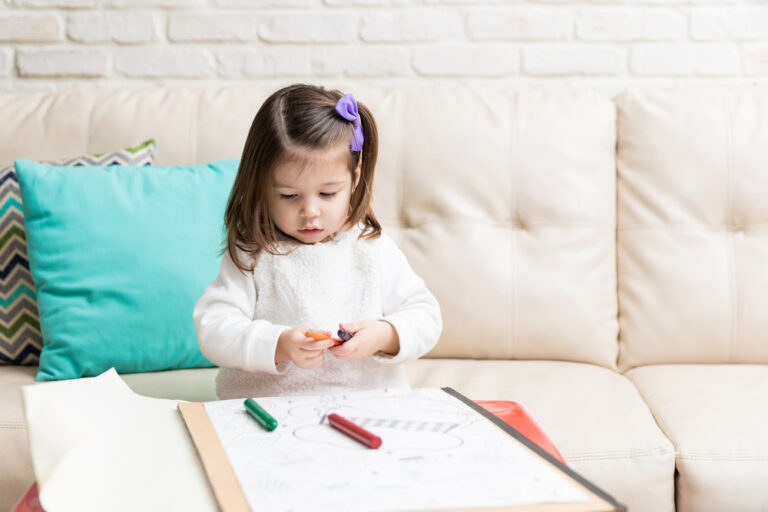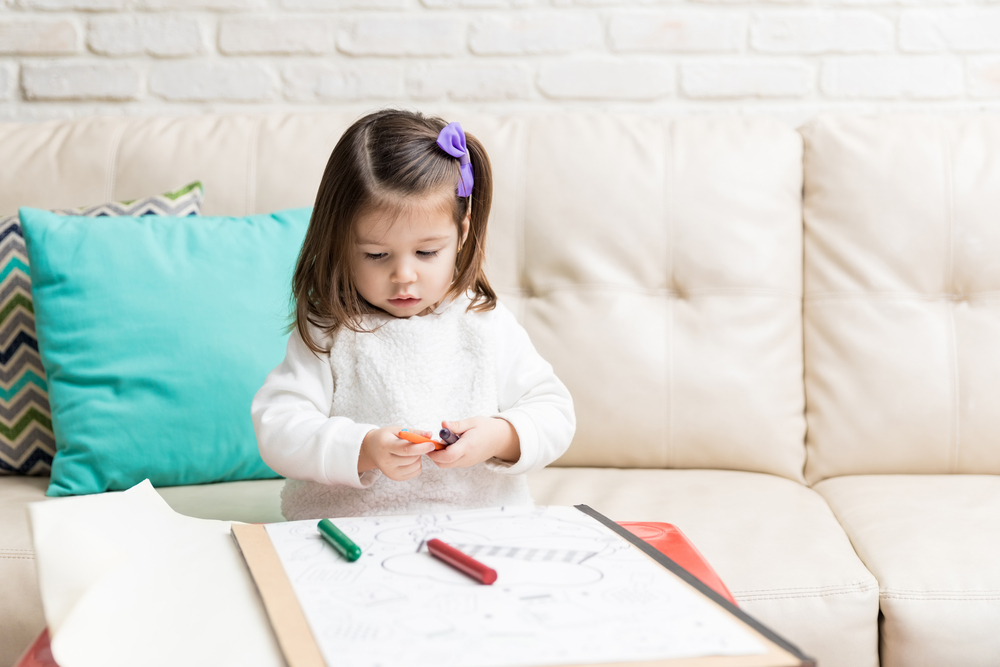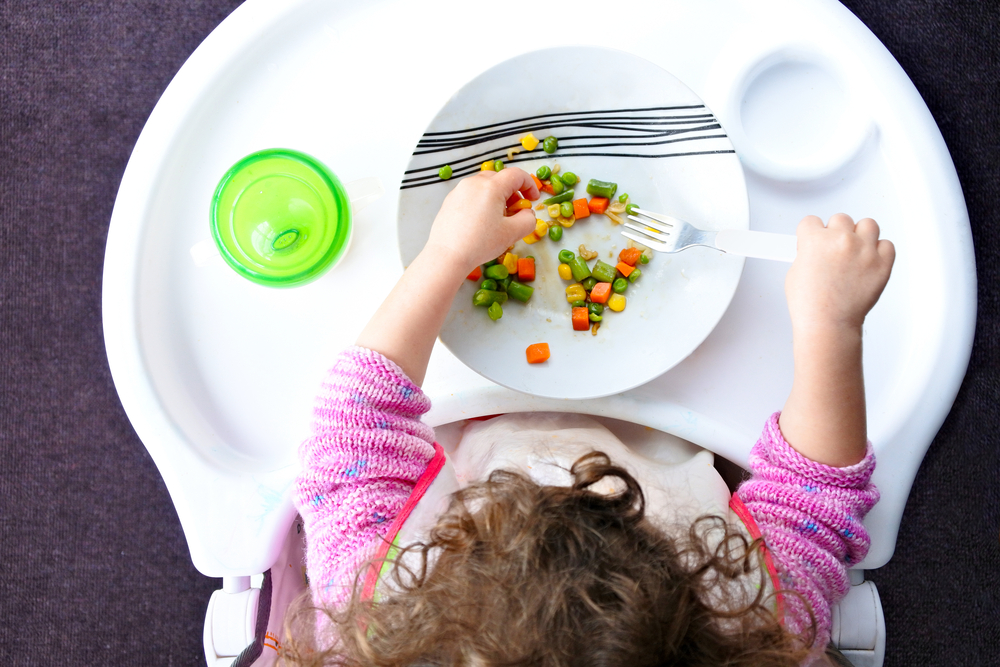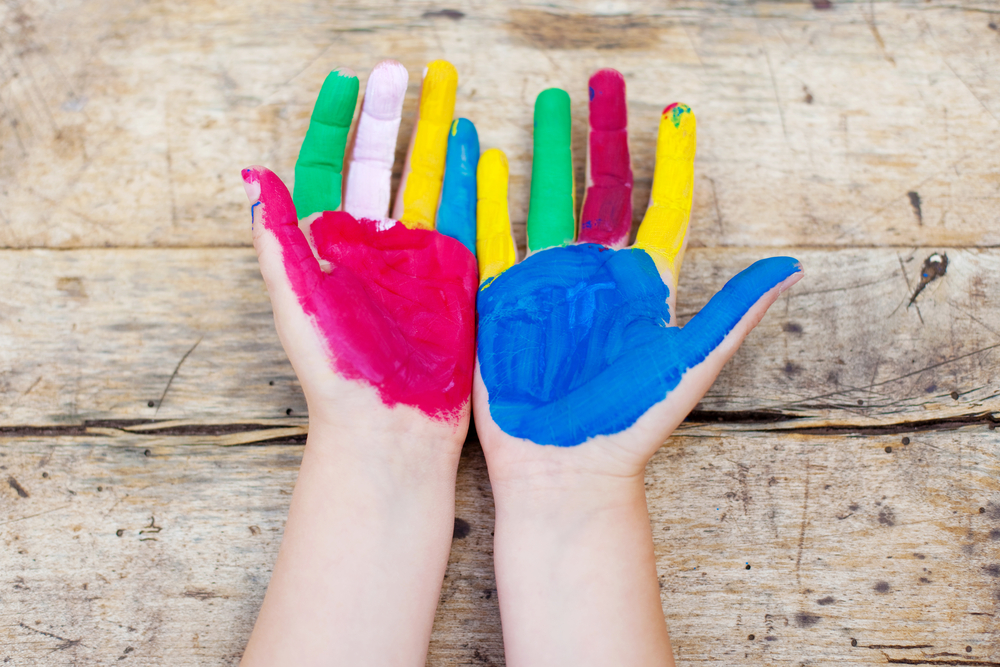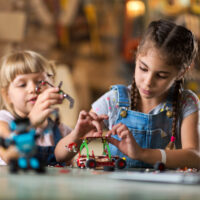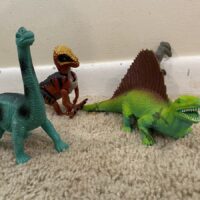From the first smile, the first word, to the first step, watching your child grow and develop is one of motherhood’s greatest joys. And something truly magical happens when toddlers begin to grasp the concept of colors. Their world, quite literally, becomes more colorful!
Research shows babies recognize colors from an early age, but according to the U.S. Centers for Disease Control and Prevention, children around 2 years old begin to developmentally understand and sort items by color.
Pointing out colors by name is an easy way to be in constant conversation with your baby all through infancy, but the toddler years are when you really want to reinforce the concept. We’ll discuss some simple ways to do just that.
How to Encourage 2-Year-Olds to Learn Colors
Fortunately, you don’t have to change or add much more to your already busy routines to give your toddler a lesson in colors. Our world is full of color!
As with teaching new words, desirable behaviors and more, repetition and communication are keys to success, even if your baby is preverbal. Babies who can’t quite talk can still pick up and understand much more than we might think.
When talking about colors, repeat yourself over and over, and change up the way you describe items. For example, say both “This is a purple flower,” and “The flower is purple.” That subtle difference can help your child better understand the color purple rather than solely associating the color with, in this case, the flower.
Learning Colors at Meal Time
An easy way to incorporate the color game is at meal time. Not only is offering foods that vary in color nutritious, but it’s also a great opportunity for toddlers to learn colors while eating. “What color is your tomato? Tomatoes are red. Red foods give you a strong heart.”
You’re probably already preparing meals and snacks multiple times throughout the day. Try to be intentional in including foods of different colors on the plate.
Learning Colors While Getting Dressed
If your toddler is like mine, her personality and strong opinions are starting to shine through! Your toddler suddenly wants to act independently, make decisions, and feel in control. Lean into their desires, within reason, of course, while helping reinforce colors. “Do you want to wear the yellow shirt or the blue shirt today? You want the yellow shirt today? Good job picking! Let’s wear the yellow shirt today.”
You are offering your toddler simple choices that he or she can proudly make on their own while giving a visual lesson in colors.
Learning Colors While Reading
It’s never too early to start reading to your baby. So much of what your baby learns will come from reading books with you. Their understanding of language, their recognition of people, animals, places – all of it starts with the foundation of reading aloud together.
When teaching colors to a 2-year-old, reading books is a wonderful resource. If your toddler won’t sit still long enough for you to read the words on the page, that’s okay! Simply looking at the pictures and pointing out different colors that you see is a great way to learn.
Brown Bear, Brown Bear, What Do You See? is a fun (and short!) book to learn colors. It has a lot of repetition and bright artwork to capture even the shortest of attention spans.
Learning Colors While Playing Games
Kids learn best through play and hands-on activities. There are countless toys to help teach a toddler colors.
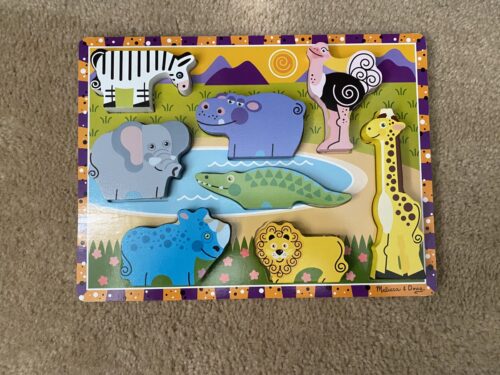
Some of my favorites are bright-colored puzzles and color sorting toys. It’s important to play with your child because they need you to name the colors and shapes you see to help them learn.
The Melissa and Doug Colorful Fish Chunky Puzzle is a great toy to teach colors to a toddler. The fish are large enough for small hands, and the colors are bright and appealing. Puzzles are good teaching tools because they are visual and encourage little ones to practice what they just learned by placing the pieces back into the correct spot.
Teach your child to sort items by color with the Learning Resources Farmer’s Market Color Sorting Set. This is a fun, adorable way for toddlers to identify fruits and vegetables and group them by color.
Another great color sorting toy is the BMAG Counting Bears with Matching Sorting Cups. This set includes red, orange, yellow, green, blue and purple cups and corresponding bears. The developmental toy encourages kids to sort the bears into the matching cups. It comes with more than 90 pieces, but don’t worry! This set includes a handy plastic storage box for easy cleanup.
Learning Colors Through Art
It doesn’t get much more hands-on than making art! The CDC recommends doing art projects with your child using a variety of materials, including crayons, paint, and paper. When creating art, describe what your child is making and then hang up the finished masterpiece on the wall or refrigerator so your toddler can proudly see it!
- Color with Crayons: Kids can begin coloring with crayons between 12 and 15 months of age. Their pincer grasps are developed enough at this point to hold a crayon, and they may be less likely to put them in their mouths. Name the crayon color as you hand it to your child, and let his or her imagination run wild!
- Finger painting: This is an excellent, developmental activity to teach toddlers their colors. To minimize mess, dress them in old clothes or just a diaper. Put them in a high chair and cover the table with a table cloth you don’t mind getting dirty. Let your child explore while you narrate. Have them mix colors to see what new colors form!
- Play with Play-Doh: Similar to paint, Play-Doh is another good way to show what happens when you mix colors. Let baby play with primary colors – red, yellow, and blue – first, then explain how new colors – orange, green, and purple – form when they’re mixed.
Learning Colors Outside
A walk in the stroller or an afternoon at the park is another way to give a lesson in colors without changing or adding to your routine. You might feel a bit like you are talking to yourself, but keep in mind, even preverbal babies and toddlers can understand what you’re saying!
This is a good opportunity to play simple games. “Let’s point out all the things we see that are green! What do you see that is green? I see the tree, the ball, etc…” Don’t forget to switch up phrasing, such as “the red leaves are falling,” and “the leaves on the ground are red.” This helps toddlers separate the color from the item you’re talking about.
Best Practices and Helpful Tips
- Focus on a few colors at a time. It may be overwhelming to your toddler (and you!) if you try to bombard them with the colors of the rainbow in one sitting. When they are just starting out to learn their colors, give them two or three color options, and build from there. Also, introduce colors that are different from each other. For example, red and yellow may be a better combination to teach than red and pink on the same day. That might cut down on confusion!
- Focus on a color a day. Another approach is to choose one color for a day of the week. For example, on Monday, learn about the color red. Offer red foods, dress your child in a red shirt, play with a red ball, etc. Repetition helps!
- Be patient. Give your baby and yourself a lot of grace. It’s hard work to learn something new, especially for little ones! Kids can sense frustration, so make sure to keep your cool. Teaching colors should be a fun experience for both of you.
- Don’t pressure. In a similar vein, please remember that all children learn and develop in their own time. Don’t panic or add pressure to your child if he or she doesn’t know their colors by 2 or 3 years old. If your toddler’s pediatrician is not concerned, try not to worry. Your child will learn when he or she is ready.
When Should My Toddler Recognize, Sort, and Name Colors?
Pediatricians and researchers set developmental milestones that children should reach by age, but remember, that every child is unique. If your child doesn’t meet a specific milestone, don’t be alarmed. Always talk to your child’s doctor if you are concerned about his or her development.
Newborns are only able to see black, white, and gray. Over the next several weeks as their color vision begins to develop, babies will see red first, according to eye care professionals at Bausch and Lomb. By five months of age, they will see the full spectrum of colors.
By the age of 2, the U.S. Centers for Disease Control and Prevention says children begin to sort shapes and colors. By age 4, kids are able to name some colors and some numbers.
An article published in the Scientific American suggests that children are able to recognize colors much earlier than that. A study in infants suggested that even before acquiring language, babies’ brains were able to sort colors into groups, the article stated.
Researchers in Japan tracked brain activity in a dozen infants as they looked at geometric shapes. When the shapes changed from green to blue, activity increased in the infants’ brains. However, activity remained steady when the shapes changed between two shades of green.
I’m Worried My Child Still Can’t Recognize Colors. When Should I Seek Professional Help?
Most ophthalmologists recommend eye exams for children between ages 3 and 5. Vision screening is recommended for all kids at least once before they start school, preferably between the ages of 3 and 4.
If you are concerned about whether your child may be color blind or have another learning disability, bring it up at eye appointments and other doctor’s visits.
Eye doctors can perform a test to check for color blindness. The most common test includes a book with several patterns of colored dots. Children with color blindness will not see certain patterns, according to the American Association for Pediatric Ophthalmology & Strabismus.
The most common form of color blindness is the inability to distinguish between red and green. Other variations of color blindness are difficulty telling the difference between blue and yellow or the most severe form, achromatopsia. According to the AAPOS, that condition is rare and happens when a person cannot see any color and sees everything in shades of gray.
The AAPOS says a child could show signs of color blindness if they mark things the wrong color, such as stating “the sky purple, the grass orange or trees yellow.” Other indications include an inability to tell the difference between shades of the same or similar colors and if colors appear washed out and are easily confused with other colors.
Color blindness is something individuals are born with and is a lifelong condition. There is no known treatment, but recently experts have developed color blindness correcting glasses to help some people improve their ability to distinguish colors. However, the glasses only work for a certain type of color blindness.
Color vision deficiencies don’t have to limit a child’s future. Early detection is important to set children up for success in school and beyond.
Final Thoughts
Babies are born ready to learn, and it’s up to parents and caregivers to teach and foster healthy development – teaching colors included.
While toys can help, don’t feel the need to buy every single puzzle, sorting toy, and developmental tool to help your child learn. You can use everyday activities and everyday items you have around the house. Repetition is so important in teaching kids about colors, numbers, shapes, and just about everything else!
You’ll love watching them beam with pride as their brains finally make the connection, and you’ll probably be beaming, too.
